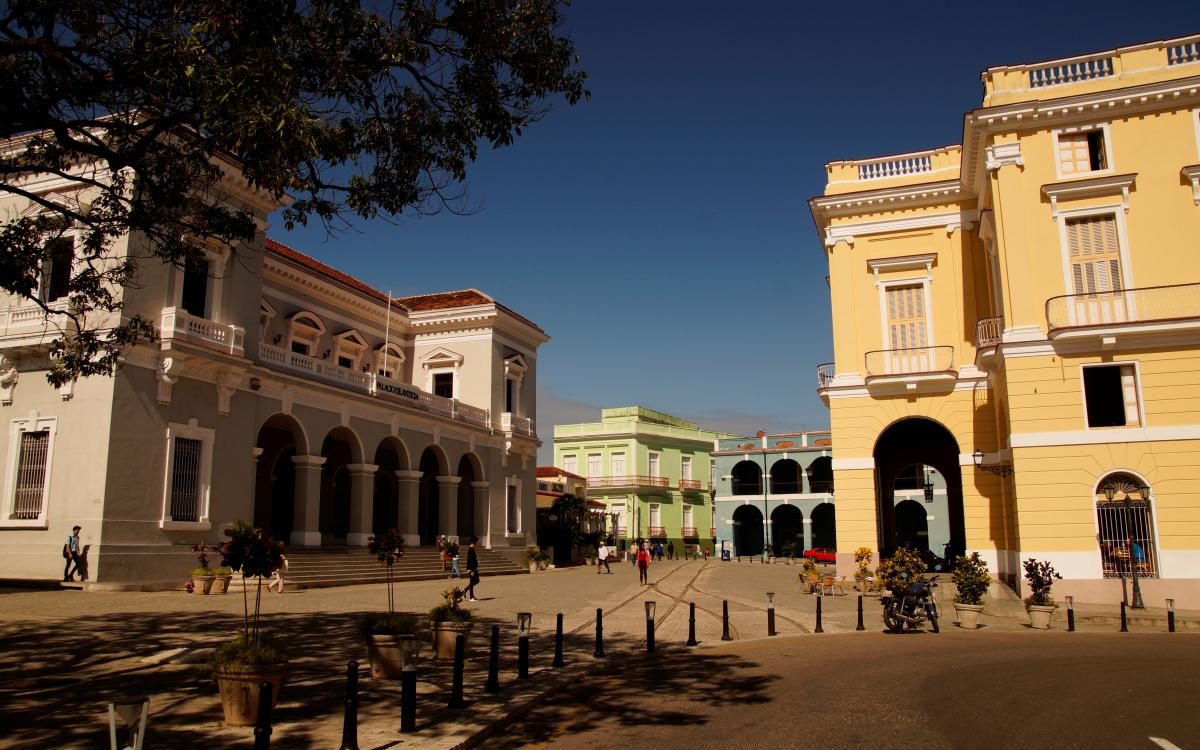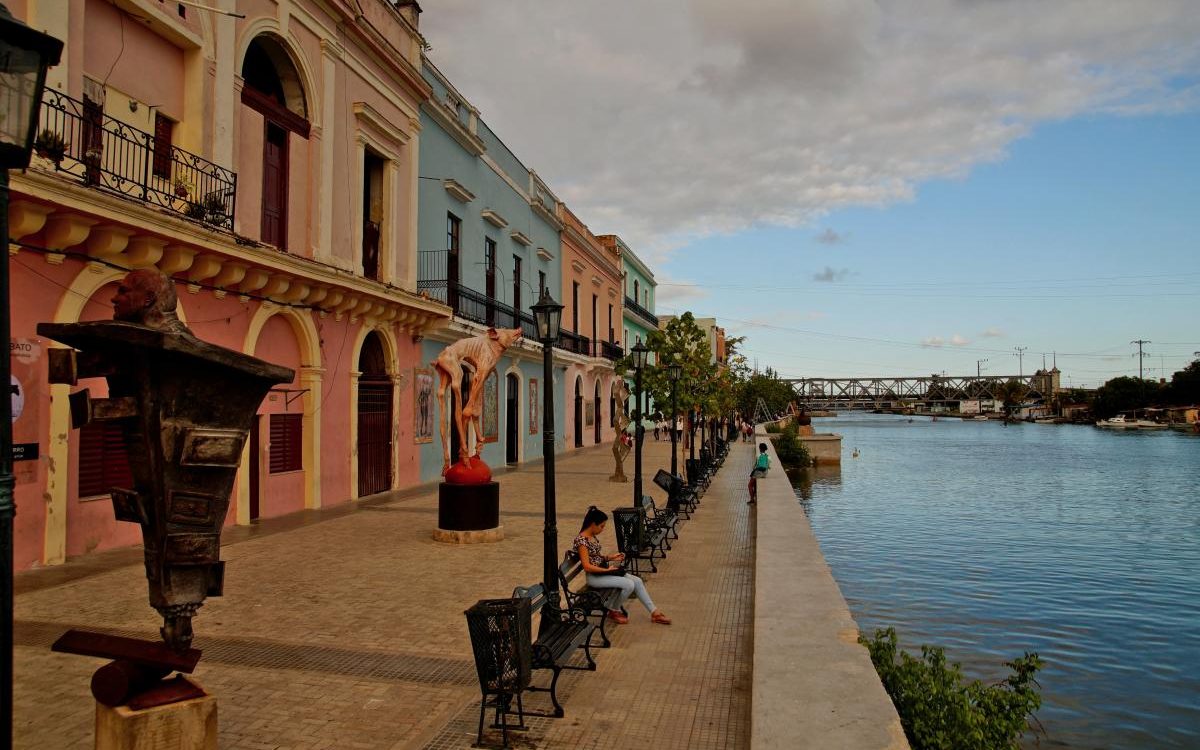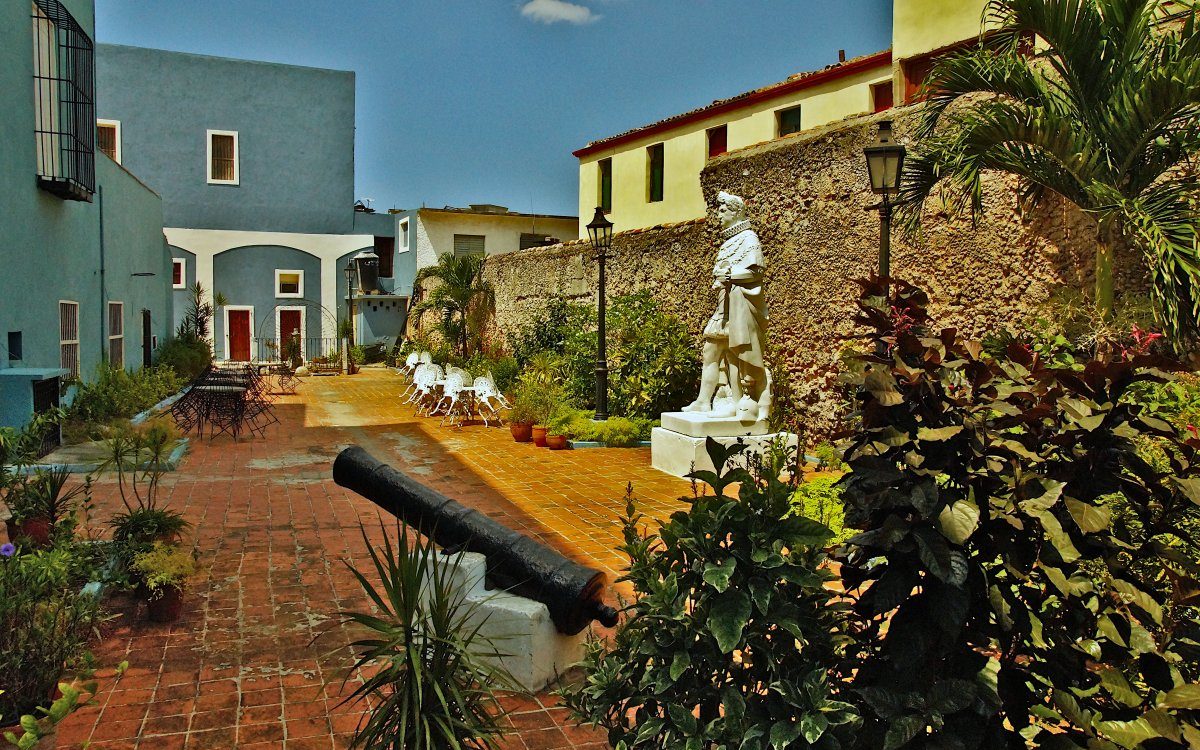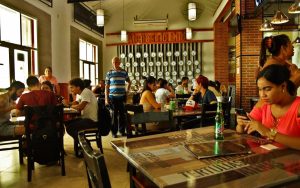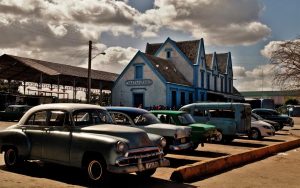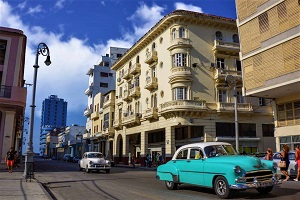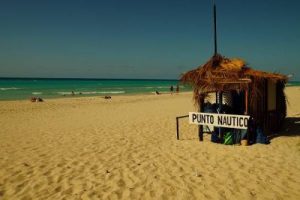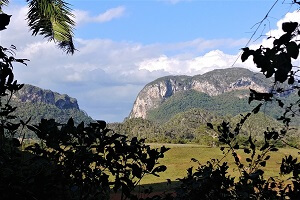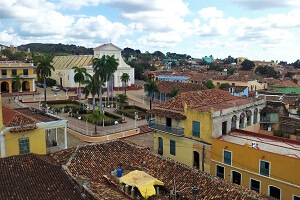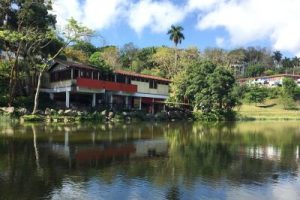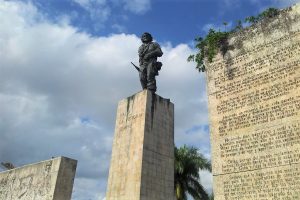Matanzas
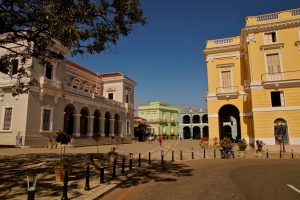
Updated: Jul 9, 2021

Updated: Jul 9, 2021
On the way between Varadero and Havana lies the city of Matanzas. Most travelers usually only pass the edge of the city center and don't see much more than the bay and parts of the quite modern harbor. Fairly few vacationers visit the small town, which have more to offer than is widely known. Matanzas is a beautiful, authentic small town and therefore a perfect place to stop over. In this article, we provide all the important information about Matanzas for visitors.
Matanzas is a relatively young city, compared to the other major cities in Cuba. The city found its origin in 1693, when Canarian settlers laid the foundation stone. In the 18th and 19th centuries, the port served the export of sugar, coffee, tobacco, as well as the slave trade. In the mid-18th century, the town benefited from the British occupation of Havana. At this period, the Spanish moved their economic activities to the city and used the protected port for the export of the important sugar. The prosperity gained in this era found expression in many elegant colonial buildings that can still be seen in the historic core of the city.
The nobility residing in the city showed generosity as patrons of the arts, so that an unusually large number of poets and thinkers settled in the city, so that a lively artistic and intellectual scene emerged. It was also during this period that the danzón style of music and dance was born in the city. Because of this history, Matanzas also carries the nickname Athens of Cuba.
Due to its location between the Yumuri and San Juan rivers and its many bridges, Matanzas is also known as the city of bridges.
The city celebrated its 325th anniversary in 2018 and. With a population of just over 150,000, it is now the eleventh largest town in Cuba, as well as the capital of the same-named province. Matanzas has a small university and an industrial port that is still of economic importance.
From a tourist perspective, the city is an excellent destination for a day trip from Varadero, which is located around 40 km to the west. Individual travelers who pass by Matanzas while on the road should definitely make a stopover in the city. For those who are interested in an authentic Cuban small town, an overnight stay is also an excellent alternative.
­
Sights & Activities
Most attractions are located within the historic downtown area and can be easily explored on foot. About a quarter of the city center, including the main buildings, squares and the waterfront, has been renovated. There is also a beautiful pedestrian street (Calle 85) that runs through the city center.
Top Sights
- In the center of the central Parque de la Libertad there is a monument to the national hero Marti. In the afternoon, the square is the meeting place of the local population, who use here also the Internet. The square is surrounded by colonial buildings. The provincial parliament sits in the Palacio de Gobierno, and the former Spanish Casino houses the municipal library. At the southern end of the square, a pharmacy dating from 1882 houses the Pharmaceutical Museum. The 19th century and newly refurbished Hotel Louvre is right next door, where you can enjoy a drink in the nice courtyard.
- At the small Parque Catedral there is the Cathedral of Mantanzas, which was built at the end of the 17th century. The Catedral de San Carlos was recently renovated and can now be visited inside. There is a public Wi-Fi connection at the square in front of the cathedral.
- The little Plaza de la Vigía marks the birthplace of the city. The statue of the unknown soldier reminds of the Spanish-American war and the resulting surrender of the city to the Americans in 1899. Around the square are a number of historic buildings, such as the Teatro Sauto, where the legendary opera tenor Enrico Caruso performed in 1920, as well as the magnificent Palacio del Junco.
Museums
- The Museo de los Bomberos exhibits various historic firefighting vehicles.
- The Museo Historico Provincial was established in the former Palacio del Junco. The building was built by a sugar factory owner and is typical of 19th century architecture. The family that built the house lived there until 1970, when the museum was established. There are exhibits about the history of the city, the sugar production and the slave trade. You can also take a look at the former owners' original living spaces.
- The Museo Farmaceutico offers a taste of a 19th-century pharmacy. In its laboratory, visitors also get a glimpse into the historical production of medicines. Both the pharmacy and much of the equipment are preserved in their original condition. For a small tip, visitors are often given a guided tour. The entrance fee is 3 USD per person.
- The Ediciones Vigia is a place for bookworms. The institution was created in 1985 and was directed until 1998 by the Cuban poet Alfredo Zaldívar. It is a place, where artistic books are produced by hand. The beautiful handmade books can also be purchased - a nice souvenir for book lovers.
Outside the center
- The Castillo de San Severino is a historic fortification located slightly north of the city center. The complex dates back to the 17th century and served to protect the port and the city. Later, the fortress was used as a prison over a long period of time. Today, travelers can visit the fortress. In addition to the fortress, overlooking the bay and the city, there is a museum dedicated to slaves and their different religious beliefs. The entrance fee is 2 USD.
- The chapel Ermita de Monserrate is located on a hill a short distance north of the center on a top of a hill. From the top one can enjoy a panoramic view over Matanzas, the bay to the ocean as well as the green Yumurí valley in the hinterland. If you are already there, you can also have a look at the small chapel, with the possibility to go on the roof, where the views are even better.
- The Cuevas de Bellamar is an interesting cave system. The stalactite cave is located about 5 kilometers east of the city center. It is one of the largest and most beautiful underground formations in the Caribbean. In the interior there are beautiful stalactites and stalagmites and various crystallized minerals. Highlights are the "Gothic Hall", which extends over a length of 80 meters and a height of 25 meters. It is quite warm in the cave. Overall, the visit is a great experience, especially for children. The entrance fee is 5 USD per person. If you want to take photos, what is not easy in the low light conditions, then you have to pay another 5 USD.
­
Eat & Drink
- The tiny Esa Talla Restaurant is located a short distance from Plaza de La Vigia on the elevated waterfront of the Rio San Juan. One can sit inside or on the beautiful waterfront. The menu features a variety of dishes, including typical Cuban meals.
- The Restaurante Romantico San Severino is located directly at the Parque de la Libertad. With a little luck, one gets a table on one of the balconies overlooking the beautiful square. The restaurant serves typical Cuban meals at moderate prices. The service and the food are decent.
- Located across from Teatro Sauto, the Café Atenas is a very popular place to eat. Served are mainly typical "Cuban" dishes, such as pizza and pasta. Next to the restaurant there is also a nice cozy café and bar.
- Located in the pedestrian street just a few meters from the Plaza de La Vigia lies the Café Mambo Jambo. The lovingly decorated Café offers typical dishes with a convincing service.
­
Nightlife
The newest hotspot for nightlife in the city center is the recently extensively renovated waterfront promenade, known as Calle 97 or Calle Narvaez.
In the evenings, locals come to stroll around, sit on the waterfront, or visit one of the new bars and galleries.
- The Galeria ARTYS is a nice bar located on the promenade of the San Juan River. The place serves good cocktails, small snacks and frequently features live music. From the seats on the promenade, one has a nice view of the historic bridge.
- The Jardin Pelusin del Monte is a nice open-air bar located in a courtyard in the pedestrian zone, just a few meters from Parque de la Libertad. The place has a nice atmosphere with an artistic decoration. It serves quick snacks and drinks at affordable prices.
- The Ruinas de Matasiete are a popular gathering place. On weekends, there are various events are held in the historical walls, some for the local LGBT szene.
- At the Tropicana Matanzas, in addition to the typical colorful and splendid dance shows, there also perform famous Cuban musicians. The entrance fee for the regular show is quite high by Cuban standards (around 45 USD). Tours to visit the dance show are offered from the hotel resorts at the same price.
­
Activities & Beaches
- The Hershey Train links Havana with Matanzas. It is to this day the only electrified railroad in Cuba. The connection was established by the U.S. chocolate manufacturer Hershey at the beginning of the 19th century, to transport goods and workers. Near Santa Cruz, the railroad passes the former workers' settlement of Camilos Cienfuegos, close to the former sugar mill. A 20-minute walk from the station are the fascinating Jardines de Hershey, a natural paradise where it is possible to swim in natural pools. The train does not stop at the main station in Havana but in Casa Blanca directly at the ferry terminal. Likewise, the train has its own station in Matanzas which is located at the northeast end of 67th Street, and thus can be reached from the city center in a good 10-min walk. Basically, there are three connections daily, in the morning, at noon and in the afternoon. The journey takes about four hours. If the train has to be repaired before departure or on the way, there can be serious delays. A ticket costs just under 3 USD.
Note: After the last severe hurricane, the Hershey Train was suspended.
­
Excursions
In the surroundings of Matanzas there are a number of worth seeing tourist attractions. Especially between Matanzas and Varadero, there are several well visited sights and beaches along the way.
­
Transport
The Viazul bus station is located only about one kilometer outside the city center of Matanzas. Therefore, anyone who has light luggage and is good can make their way to the bus station on foot. Those who rely on a cab should not have to pay much more than 5 USD for the short distance from the center. At the bus station, four to five buses run per day to Havana and Varadero. If you want to go to the south or east of the island, you have to change buses in Varadero or in Havana.
There are also shared cabs to Havana at the bus station (7 - 10 USD). Another meeting point for shared cabs is just a little south of the Teatro Sauto. From there, shared cabs run to Varadero (2 USD) or - sometimes - also to Havana (7 USD).
Matanzas is also located on the important east-west railroad connection. Trains depart from the station - it is the same as the Viazul - to the west (Havana) and to the east (Santiago/Guantanamo). The train service is currently undergoing a transformation. For details, see the article on railroads in Cuba.
Rental cars can be reserved at Cubatur at the hotels at the main square, the Parque de la Libertad. Another option is to make a reservation directly at the Havanautos office, that is located about 5 km east of the city center (Carr. Central de Cuba between 208th & 210th Street).
­
Accommodation
We recommend staying overnight in the historic city center. At the central Parque de la Libertad there are two decent hotels. If you prefer to stay in a private casa particular, you also have several options.
In the following overview you will find the best places to stay:
